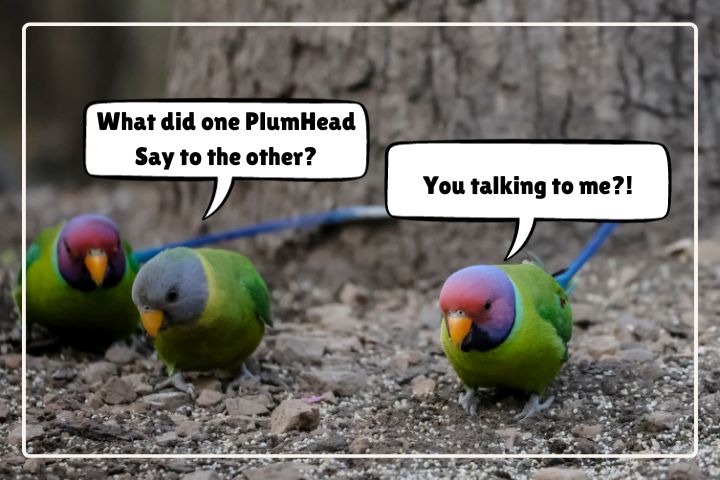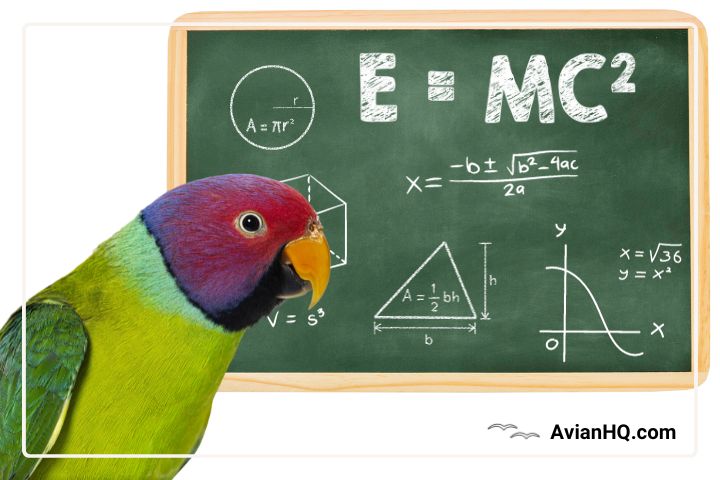Can Plum Headed Parakeets Talk?
Do you want to know if Plum Headed Parakeets can talk? Well, the answer is yes! These beautiful birds are known for their ability to mimic human words and sounds. While they may not be as skilled as some other parrots when it comes to talking, they can still learn a few words and phrases with proper training and consistent practice.
If you want to teach your Plum Headed Parakeet to talk, it’s important to start early and be patient. With time and effort, you may be able to teach your bird to say a few words, greet you when you come home, or even sing a song.
Vocalization and Mimicking Abilities
While plum-headed parakeets may not speak as clearly as some of the larger talking birds, they can still be amazing talking companions. Some plum-headed parakeets have even gained fame for their impressive talking abilities.
Plum-headed parakeets are renowned for their impressive talking abilities. Some individuals have gained fame for their exceptional talent in mimicking and reproducing human speech. These parakeets have the ability to learn and imitate a variety of words and phrases with remarkable accuracy.
Their talking abilities are a result of their intelligence and their strong sense of hearing. Plum-headed parakeets are quick learners and have excellent memory retention. They can pick up on sounds and mimic them effortlessly.
With proper training and socialization, plum-headed parakeets can become proficient talkers. They can learn to associate words with specific situations or actions, and even respond appropriately. This interactive communication can create a deep bond between the parakeets and their human caregivers.
Additionally, their vocalization is diverse and can include whistles, chirps, squawks, and other sounds. They are also known to have a unique singing style that is different from other parrots.
Read Next: What size cage does a plum headed parakeet need?
Training Plum Headed Parakeets
Teaching your Plum Headed Parakeet to speak or mimic human words can be a fun and rewarding experience. However, it requires patience and consistency. Here are some tips to help you train your parakeet:
Start with Hand-Taming
Before you can start teaching your parakeet to speak, you need to gain its trust. Hand-taming is the process of getting your bird used to your hand, and it’s the first step in building a bond with your parakeet. You can start by offering your hand to your bird and letting it get used to your presence. Once your bird is comfortable with your hand, you can start offering treats from your hand. This will help your bird associate your hand with positive experiences.
Teach Basic Commands
Once your bird is comfortable with your hand, you can start teaching it basic commands. Start with simple commands like “step up” or “step down.” Use a consistent tone of voice and reward your bird with treats when it follows your command. Repeat the command several times until your bird understands what you want it to do.
First Words
When teaching your Plum Headed Parakeet its first words, it is important to start with simple and easy phrases. Begin by introducing words like “Hi” and “Hello” to help your parakeet become comfortable with greetings. Repeat these phrases in a cheerful and enthusiastic tone to encourage your pet bird to mimic you.
As you progress, incorporate phrases like “Good Morning” to expand its vocabulary. Reinforce these phrases by saying them consistently during the morning hours.
Lastly, introduce the phrase “I love you” to foster a loving and affectionate bond between you and your parakeet. Repeat this phrase while gently interacting with your bird, such as during playtime or when providing treats.
Remember, consistency and patience are key when teaching your Plum Headed Parakeet its first words. Regular practice and positive reinforcement will help your feathered friend master these phrases and strengthen your communication with each other.
Use Positive Reinforcement and Consistency
To successfully train your parakeet, it is important to use positive reinforcement and maintain a consistent approach. Use clear and simple commands, and repeat them consistently.
Show your bird appreciation and give it treats when it obeys your instructions or shows improvement in its speech abilities. Create a positive association in your parakeet’s mind, making it more likely to repeat the desired behavior.
Training sessions should be short and frequent, ideally around 5-10 minutes several times a day. Overdoing it may overwhelm your bird and result in a lack of interest or progress. It is best to avoid punishing your bird for not following commands, as this may cause fear and resistance in your bird.
Provide a Stimulating Environment
A stimulating environment is essential for keeping your parakeet healthy and happy. Provide your bird with a spacious cage that allows it to move around freely. Add perches, toys, and other accessories to keep your bird entertained. Make sure to clean the cage regularly to prevent the buildup of bacteria and other harmful substances.
Remember to create a calm and distraction-free environment during training sessions. Limit noise and ensure that you and your parakeet can focus on each other without interruptions.
Feed a Healthy Diet
A healthy diet is essential for keeping your parakeet healthy and happy. Provide your bird with a balanced diet that includes pellets, fresh fruits, and vegetables. Avoid feeding your bird seeds exclusively, as this can lead to nutritional deficiencies.
Noise Levels and Considerations
Plum Headed Parakeets are known to be moderately loud when compared to other parrot species, but they are not excessively noisy. They tend to make the most noise when out of their cage, especially during the morning and evening hours.
If you live in an apartment or have close neighbors, you may be concerned about the noise levels of a Plum Headed Parakeet. While they are not the quietest birds, they are quieter than many other parrot breeds. With proper training and attention, you can teach your Parakeet to keep their noise levels down.
It is important to note that each bird has their own personality, and some may be louder than others. If you are concerned about noise levels, it is best to spend time with the bird before making a purchase to get a sense of their noise level and personality.
Conclusion
Plum-Headed Parakeets are known to have the ability to talk. However, it is important to note that not all parakeets will develop this skill, and some may only learn a limited vocabulary.
If you are interested in owning a parakeet that can talk, it is recommended that you seek out a breeder who specializes in teaching parakeets to talk. Alternatively, you can try to teach your parakeet to talk yourself, but it may take time and patience.
It is also worth noting that while Plum-Headed Parakeets are generally less aggressive and possessive than other parrot species, they still require regular interaction to remain socialized. If you are considering getting a Plum-Headed Parakeet, it is important to make sure that you have the time and resources to properly care for your bird.








I dugg some of you post as I cogitated they were very useful very beneficial